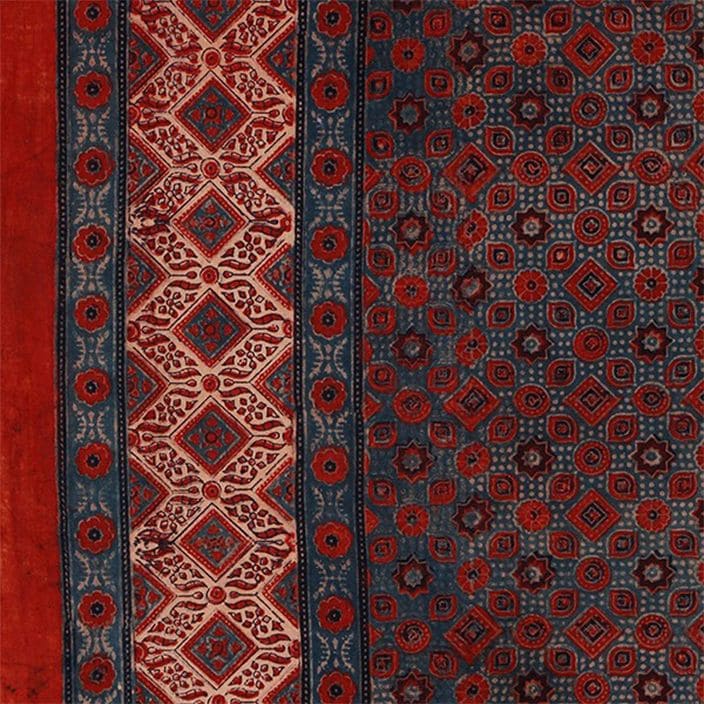For best prices and early deliveries, WhatsApp us at. 918488070070

Ajrakh
In the land of drought, colour and arts, stands the signpost calling to Ajrakhpur. Home to a sheer beauty of art done on fabric through block printing and resist dyeing, Ajrakh finds its roots in the bordering land of Sindh. It is more than a fabric; it is a tradition.
Tracing Its Origin
Ajrakh print origin dates back to the Indus Valley civilization, Ajrakh was practised on the banks of the Indus. The art bloomed in India in the 16th century when the Khatri community was called to the district of Dhamadka, Kutch in Gujarat by the then ruler.
Post the 2001 earthquake, the art form shifted its base from Dhamadka to what's now called Ajrakhpur.
How It’s Done
An extremely laborious and tedious process, Ajrakh block printing process involves multiple repetitions at various stages. It starts with preparing the fabric by immersing it in a solution of camel dunk, soda and castor oil, rinsing it thoroughly thereafter. Next, it is dyed in myrobalan to ensure that the colour after dyeing is caught on equally all through the fabric. Block which are used in Ajrakh block printing process is made by block maker from indigenous wood pieces.
A resist of gum arabic and lime is printed on the fabric to outline the motifs that have to be white. It is followed by indigo dyeing and boiling it in alizarin. For every colour used on that fabric, this process has to be repeated and kept out for drying for one whole day. Hence, “Aaj rakh” or keep it today.
Design Elements
It is known as a celebration of nature, evident in the aesthetics of its colours and motifs. The traditional colours found are deep and earthy, crimson symbolising the earth, and indigo, twilight. Black is obtained through a mixture of iron shavings, jaggery and tamarind seeds.
Red is obtained from alizarin found in the roots of madder. Indigo is found in indigo plants. The designs are a combination of various symmetrical geometric jewel-like shapes that symbolize elements of nature such as flowers, leaves and stars.
Variations Of The Craft
Divided based on pricing, Ajrakh is made as Ekpuri, printed on one side and Bipuri, printed on both sides. Ekpuri Ajrakh print is worn by people of the lower-income groups whereas, Bipuri is considered a status symbol and way more costlier. Malir is a type of Ajrakh print that is done on a red background and with floral and geometric motifs only.
Types of Ajrakh can also be distinguished based on their methods of Dyeing. Some types of Ajrakh are known as sabuni ajrak, do rangi ajrak and kori ajrak.
Ajrakh Today
Today Ajrakh print has a huge domestic and international clientele. Cheaper alternatives in the form of screen printing do exist, but it's safe to say that the true art form prevails even in the current age.
Ajrakh and Bandhani are traditional textile techniques originating from different regions of India, with Ajrakh being a block-printing technique characterized by geometric patterns and Bandhani being a tie-dyeing technique known for its vibrant colors and intricate designs.
Image Credits
Chhaya Kothari | D’Source | Gaatha.org | Gujarat Tourism | India 1001 | Indiamart | Luxurionworld | Medium Direct Create | Rajasthan Industries | Salvabrani | Strand of Silk | Turquoise the Store